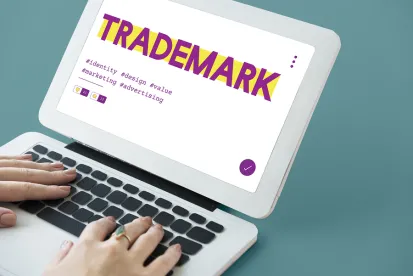Addressing issues relating to validity of registered and common law trademarks, the US Court of Appeals for the Eighth Circuit upheld a jury verdict finding infringement of two registered marks and reversed a verdict finding infringement of three marks because the owner of the mark failed to establish that the marks had acquired secondary meaning. Sturgis Motorcycle Rally, Inc. v. Rushmore Photo & Gifts, Inc. et al., Case Nos. 17-1762, -1869, -2712, -2731 (8th Cir. Nov. 2, 2018) (Arnold, J).
In 1938, Clarence “Pappy” Hoel started a motorcycle rally in Sturgis, South Dakota, that has grown to be the largest rally in the world, with several hundred thousand attendees. In the late 1980s, Tom Monahan, a local artist and vendor, donated a composite mark for the rally (the Monahan mark) to the Sturgis Area Chamber of Commerce, which had just accepted a central role in promoting the rally.

In 2010, the Chamber assigned its rally-related marks to Sturgis Motorcycle Rally (SMRI), which runs a licensing program. Licenses for the rally-related marks cost vendors 8 percent of the wholesale price of the goods sold.
Over the years, the rally has attracted independent vendors who sell rally t-shirts, souvenirs and pins. The Niemann family owns Rushmore Photo & Gifts and sold rally souvenirs without a license, but advertised some of the goods as “officially licensed.” SMRI sued Rushmore, the Niemanns, JRE and Walmart (collectively, Rushmore) for trademark infringement and related Lanham Act violations. At trial, a jury found that Rushmore infringed SMRI’s federally registered Monahan, STURGIS and STURGIS BIKE WEEK marks and its common law STURGIS MOTORCYCLE RALLY and STURGIS RALLY & RACES marks. Rushmore appealed.
The Eighth Circuit first addressed SMRI’s argument that the district court erred in holding that Rushmore was not precluded from challenging the validity of SMRI’s trademarks under the doctrine of licensee estoppel because Rushmore Photo & Gifts had once licensed the Monahan mark for postcards. The Court noted that licensee estoppel generally applies only to marks that are licensed (here the Monahan mark), and Rushmore had not challenged the validity of that particular mark. The Court noted that even if Rushmore Photo & Gifts was held to be estopped from challenging the validity of the marks, the other defendants would have been free to challenge the validity of SMRI’s marks since they had never before licensed the mark.
The Eighth Circuit next addressed whether SMRI had established that its registered STURGIS mark had acquired secondary meaning and was protectable. While registered marks are generally entitled to a presumption of validity, the STURGIS registration was not, because it was based on § 2(f) of the Lanham Act, and Rushmore had allegedly infringed the STURGIS mark prior to its registration date. The Court found that SMRI failed to establish that it had engaged in “long and exclusive” use of the STURGIS mark in connection with the sale of its goods. The Court rejected SMRI’s attempt to show that every use of the word “Sturgis” by it and its licensees in advertisements, on goods and in other trademarks established SMRI’s exclusive use of the STURGIS mark. The Court also noted that testimony showed that many people used STURGIS on rally-related goods and services in the 1900s and 2000s, and that the rally was commonly referred to as STURGIS. The Court thus reversed the jury verdict, finding that the jury erred in finding that the STURGIS mark had acquired secondary meaning and therefore was valid and infringed. The Court further held that SMRI failed to prove that its common law marks STURGIS MOTORCYCLE RALLY and STURGIS RALLY AND RACES had acquired secondary meaning.
Rushmore also appealed the jury’s finding that it intentionally and willfully infringed the Monahan mark by selling a shot glass (shown below), and that the shot glass was a counterfeit product.


The Eighth Circuit found that the record supported a finding of willfulness based on the many similarities between the dominant portions of the Rushmore shot glass and the Monahan mark, including the circular shape, the eagle facing right, Sturgis/Black Hills followed by the words “Motor Classic” in an arc, and the feathers. The Court also noted that the shot glass stated “Genuine Article—Accept No Substitutes,” and a jury could conclude that Rushmore intended to confuse customers with that language. The Court, however, held that given the obvious differences between the shot glass and the Monahan mark, the jury did not have a sufficient basis to find that the shot glass was a counterfeit.
Finally, the Eighth Circuit reviewed whether the district court properly applied laches and acquiescence to preclude SMRI from recovering the $913,000 in damages awarded by the jury. SMRI argued that Rushmore was not entitled to equitable relief because its willful infringement was equivalent to a finding of unclean hands. The Court noted that a defendant that has engaged in willful infringement may still be entitled to equitable relief. In this case, the Court remanded the laches and acquiescence issue since, in light of its finding that the STURGIS registration and common law marks were invalid, it was no longer clear whether the district court would have applied laches to only the sales of goods infringing the Monahan and STURGIS BIKE WEEK marks.



 />i
/>i

